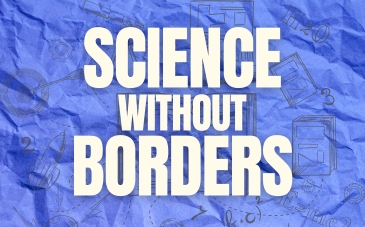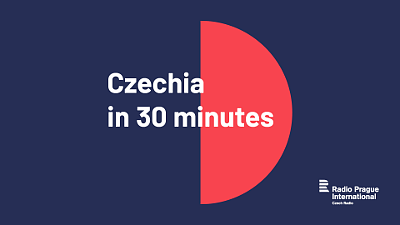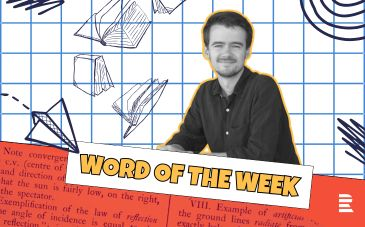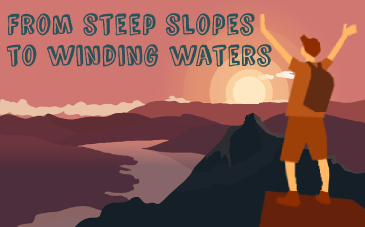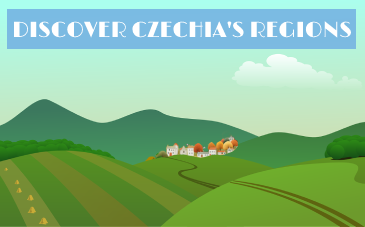Science on the sphere: Bringing global and space phenomena to life in Žatec
Forget chalkboards and textbooks. In the heart of the Czech Republic, a glowing globe powered by satellite data is transforming science education—one orbit at a time. Using a high-tech globe and real-time data from space, a group of educators in Žatec are helping to see the planet—and science itself—in a whole new way.
From hops to high-tech: a scientific shift in Žatec
Near the historical center of the Czech town of Žatec, known more for hops than for high-tech science, something very interesting is happening. A small team is using cutting-edge technology, creativity, and a passion for education to make science engaging, playful, and above all—accessible. And I am meeting the team manager:
“My name is Monika Čechurová. I currently work in Žatec, at the Natural Science Center, formerly the Technical Club Žatec. And what I do—if I sum it up in one sentence—is the popularization of science, especially natural sciences. Geography is such a broad discipline that it connects with many others. I studied geography, but nowadays I also work on popularizing other sciences or combining it with other fields. I also studied cartography, which is now a technical science in its own right, and that popularization, especially in the planetarium, also involves astronomy.”
The centerpiece of their approach is a striking spherical projection system called Science on the Sphere, developed by the U.S. National Oceanic and Atmospheric Administration (NOAA). This dynamic tool allows visitors—especially school groups—to visualize complex global phenomena in real time, from climate systems and ocean currents to earthquakes. Čechurová’s team is part of a global network of about 200 institutions using this unique technology. Surprisingly, five of them are in the Czech Republic.
“There are about two hundred of these globes in the world. Most of them are in America, in the United States – quite a lot. That’s actually where it all started. There’s also a surprising number in East and South Asia, and around twenty installations in Europe. At the moment, there are five in the Czech Republic.”
A globe like no other: inside Science on the Sphere
What makes Science on the Sphere so captivating is its ability to display complex, often invisible processes—like ocean currents or climate change patterns—in an intuitive, visually powerful way. The Žatec team uses it to combine satellite data with a dynamic interface that shows how everything on Earth is connected.
“Now I’ll show you – unfortunately, the listeners won’t be able to see it – but it’s the same topic processed using satellite data and mainly with the help of a dynamic map. The previous one was static – this one is dynamic. If we were to describe it, we’d see a globe here, and on it, using different colors – I assume red, for example – various temperatures and movements are recorded. And here we can see that the whole system is global. There are currents – they don’t really start or end anywhere – the entire system is interconnected across the planet. And here, for example, we can see the engine of the whole system: that’s the blue circumpolar current around Antarctica. And that’s an example of one of the datasets.”
Because the system updates in near real time, it can be used to discuss breaking events, such as earthquakes or weather changes, within hours of their occurrence—bringing current events quite literally into the classroom.
“What’s interesting are the real-time images – that means in real time, within a few hours. We can download satellite images on selected topics or from selected areas. Right now, I’m showing cloud cover, but we also have earthquakes and so on. So, they’re not so polished or graphically adjusted – sometimes there’s a flash or a glitch – but that’s the trade-off for having the image available within four or five hours. That means if something happens – I don’t know, like an earthquake or some event during the night – I can immediately discuss the issue with students in the morning and include it as a real-time demonstration.”
Learning without borders—or desks
The sphere is just one part of a broader vision. The center is currently preparing a new program on the International Space Station and is developing an immersive virtual reality experience. The goal is to go beyond lectures and get students out of their seats, interacting with science in a hands-on, exploratory way.
“I can also show connections in a way that you simply can’t do on a flat classroom board. Spatial connections, relationships between objects. I can shift through time – into the past, the future, or across the course of a year. I can choose different perspectives. As I’ve said before, I can even be outside the Earth, looking at the phenomenon – a planetary phenomenon – from the outside. That’s incredibly interesting, it helps explain a lot of things, and yet in the classroom, on a blackboard, it’s very hard to show.”
What Monika Čechurová and her team are doing in Žatec is a vibrant example of how science education can adapt to the 21st century—by integrating technology, storytelling, and the natural human drive to explore. Geography, perhaps more than other sciences, crosses interdisciplinary borders. It's a way of understanding our place on the Earth—and, occasionally, beyond it.



